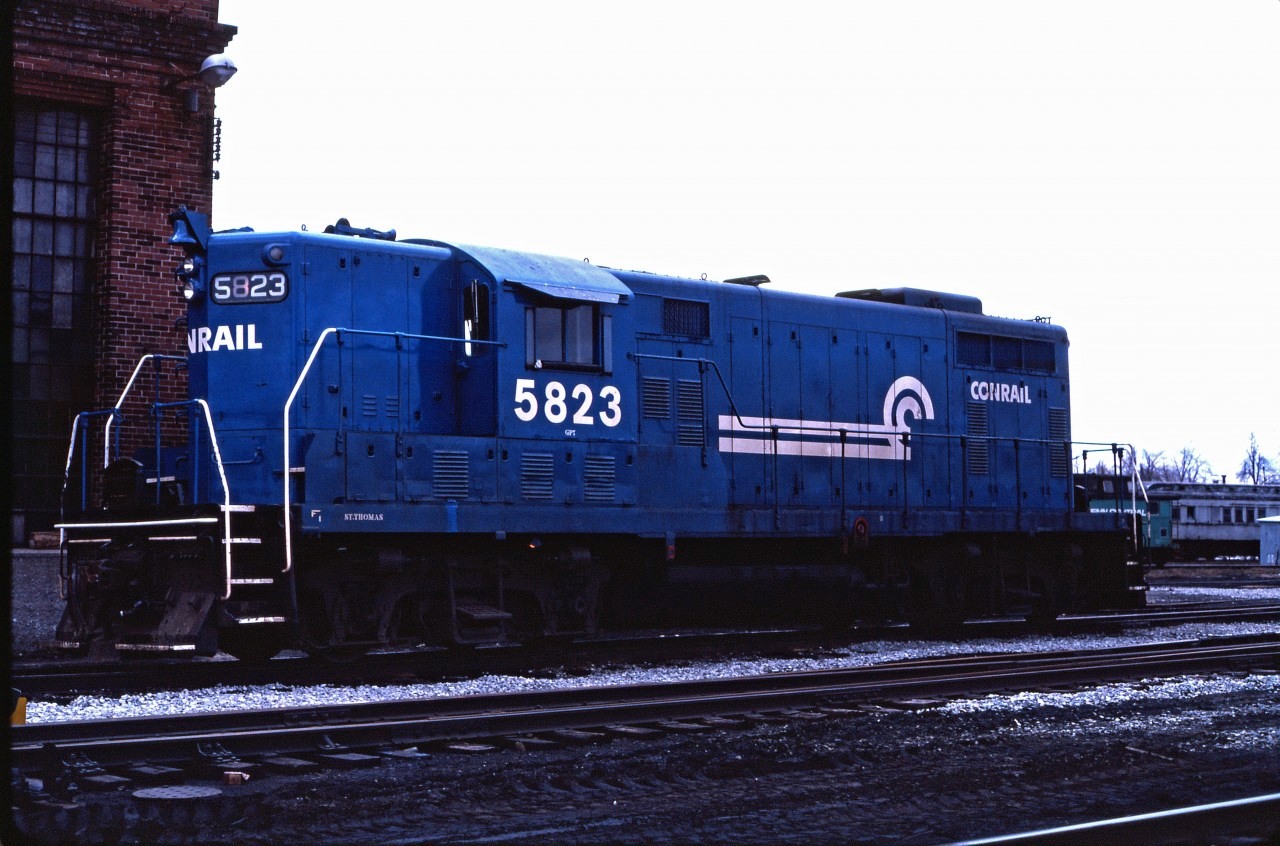|
Caption: By the late 1970s, St. Thomas had become a quiet railroad town. For a railfan based in Hamilton, the game plan was to drive down to the Cayuga sub and try to pick up the N&W while driving west to St. Thomas. Shoot whatever was in town at the C&O and CASO (now Conrail), drive up to London to see what was at Quebec Street (remember, CP was a bit different for Hamilton fans back then) and finally hang out on CN and maybe see some trains in the new VIA paint.
Unfortunately, April 15, 1978 was a very dull day. However, a GP7 in full Conrail paint was still a nice catch two years after Conrail start-up.
|



And none of the Canadian modifications! Blue all around including the Bell.
Thanks for the narrative on what a typical day was – what were your chances of a N&W in those days?
Also, what were your chances of finding a C&O Train on the CASO since they would have been an earshot away? Did you use a radio at the time?
It was “dark territory” back then, Steve. You went out when you thought trains would be running (e.g. when one or more passenger trains were scheduled through) and had to keep your wits about you. While a few fans had scanners, you had to know the radio frequencies and get the right crystals in your scanner (none of today’s “program it in” stuff); I only got a scanner in the mid-1980s.
.. or the timetables right? N&W Trains 90 and 28 were scheduled in the TT until the mid 80′s on the Cayuga sub. Not many freights were on the schedule either!!
Timetables? Sort of, Steve. Remember, under timetable and train order rules, a train is superior by right, class or direction. And timetable schedules were in effect for 12 hours unless fulfilled…after that a train lost both right and schedule. Therefore, a train could run hours behind the timetable schedule and still be authorized to move.
In the case of the Chatham and Cayuga subs, only the eastbound N&W trains were authorized by timetable; the westbounds were extras. On the CASO/Canada Division, only passenger trains were listed in the timetable and other trains moved by signal indication (ABS).
So you watched for headlights and listened for horns!
Interesting. I’ve had a few lessons in train orders…. and I still have yet to piece it all together how it all worked with a timetable. Very confusing to this modern-era railfan who never had any exposure to the old ways.
so riddle me this – if 90/28 were listed in the Timetable, how often did it adhere to that schedule?